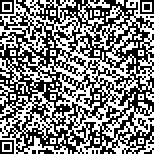| 本文已被:浏览 1676次 下载 1286次 |

码上扫一扫! |
|
|
| 台湾以东黑潮及邻近东海水中的放射性核素及其对黑潮入侵的指示 |
|
王启栋1,2,3, 宋金明1,2,3, 袁华茂1,2,3, 李学刚1,2,3, 李宁1,2,3
|
|
1.中国科学院海洋研究所 海洋生态与环境科学重点实验室 青岛 266071;2.青岛海洋科学与技术国家实验室 海洋生态与环境科学功能实验室 青岛 266237;3.中国科学院大学 北京 100049
|
|
| 摘要: |
| 根据2014年5—6月对台湾以东黑潮主流以及东海陆架海域的调查,研究了海水中放射性核素K-40、Ra-226和U-238的分布特征,并以放射性核素为指标定量评估了黑潮入侵东海的程度和范围。结果表明,黑潮主体放射性核素的含量有明显的层次差异,整体上看从表层至深层逐渐减小,K-40、Ra-226和U-238的含量范围分别为13.47—26.11、5.08—9.51和7.38— 14.72mBq/L。在台湾东部河流带来的陆源物质输入影响下,黑潮主流下游的放射性核素含量略高于上游。从水平分布上看,近岸海域放射性核素含量明显高于黑潮主流区,而长江口和杭州湾外也存在K-40和Ra-226的低值区,并且底层海水中更明显。海水的物理化学参数对放射性核素分布的影响不大,不同水团放射性核素的含量差异主要由陆源物质输入的不同引起。以放射性核素K-40、Ra-226以及温盐为指标,根据端元混合模型的计算结果显示,黑潮在台湾东北部涌升后,继续沿东北方向流动,并可入侵至长江口和杭州湾外,而福建近岸海域基本不受黑潮水的影响。放射性核素指标K-40和Ra-226可作为温盐参数的补充,用于指示黑潮入侵东海的程度和范围,并可结合温盐参数,用于多水团混合的半定量研究。 |
| 关键词: 放射性核素 指示指标 黑潮入侵 东海陆架 |
| DOI:10.11693/hyhz20170500130 |
| 分类号:P731.23 |
| 基金项目:中国科学院战略性先导科技专项(A类),XDA11020102号;青岛海洋科学与技术国家实验室“鳌山人才”计划项目,2015ASTP-OS13号。 |
附件 |
|
| RADIONUCLIDE IN THE EAST CHINA SEA AND ADJACENT KUROSHIO SEAWATER: INDICATION OF KUROSHIO INTRUSION |
|
WANG Qi-Dong1,2,3, SONG Jin-Ming1,2,3, YUAN Hua-Mao1,2,3, LI Xue-Gang1,2,3, LI Ning1,2,3
|
|
1.Key Laboratory of Marine Ecology and Environment Sciences, Institute of Oceanography, Chinese Academy of Sciences, Qingdao 266071, China;2.Laboratory of Marine Ecology and Environment Sciences, Qingdao National Laboratory for Marine Science and Technology, Qingdao 266237, China;3.University of Chinese Academy of Sciences, Beijing 100049, China
|
| Abstract: |
| We studied the distribution of K-40, Ra-226, and U-238 in the Kuroshio mainstream (KM) and East China Sea (ECS) using radionuclide as a tracer to assess the extent of Kuroshio intrusion into the ECS. We found that radionuclide concentrations were different in different layers of the KM, and in general, the concentrate decreased downwards in the ranges of 13.47—26.11, 5.08—9.51, and 7.38—14.72mBq/L for K-40, Ra-226, and U-238, respectively. As the KM flows through the east of Taiwan Island, the radionuclide concentration increased slightly, mainly because of the terrestrial material input brought by rivers of eastern Taiwan. In overall, the radionuclide concentration in the coastal sea was higher than in the KM as well as in the sea off the Changjiang (Yangtze) River mouth and Hangzhou Bay (CJM-HZB). Physical and chemical parameters of seawater had litter influence on the distribution of radionuclide, and the difference in radionuclide concentration in different water masses was due mainly to terrestrial material input. Based on K-40, Ra-226, temperature, and salinity data, we calculated the proportion of KM to the ECS using an end-member mixing model. The results show that the KM flows northeastward after it upwells in the northeastern Taiwan, and reaches in the area of CJM-HZB but Fujian coastal regions. Therefore, K-40 and Ra-226 could be used as supplementary parameters of temperature and salinity to indicate the extent and scope of Kuroshio intrusion into the ECS, and as a tracer to estimate the mixing of water masses along the Kuroshio path. |
| Key words: radionuclide tracer Kuroshio intrusion the East China Sea |
